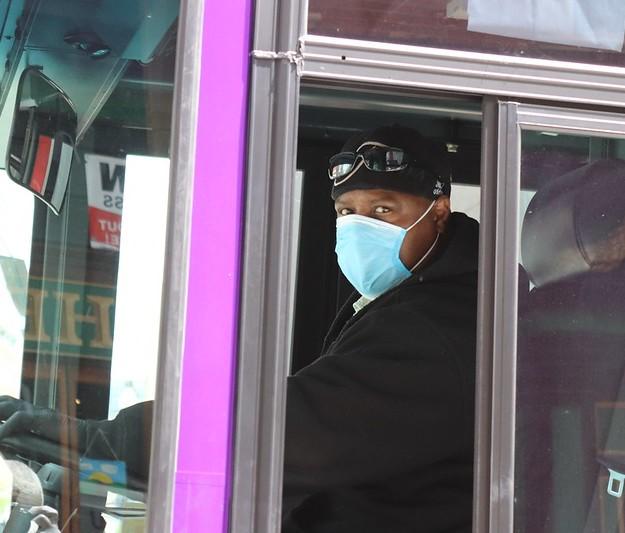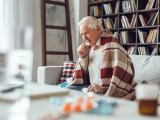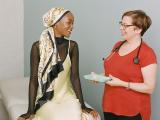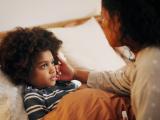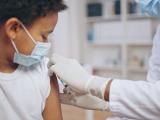A little more than two weeks since the United States hit 150,000 COVID-19 deaths, the country has now surpassed 170,000 lives lost to the novel coronavirus.
The rising number of deaths comes as the nation continues to deal with the surge in cases that started earlier in the summer. While the number of new COVID-19 cases nationwide has begun to slow over the past few weeks, the United States is still recording more than twice the number of new daily COVID-19 cases it was in June.
Meanwhile, public health experts remain worried that the return of K-12 and college students to school will lead to a new spike in infections. The detection of four clusters of coronavirus cases at the University of North Carolina at Chapel Hill (UNC), which began its fall semester on Aug 10, highlights those worries. Today the school announced it will shift to online learning for undergraduates starting Aug 19.
"We understand the concern and frustrations these changes will raise with many students and parents," UNC chancellor Kevin Guskiewicz and executive vice chancellor and provost Robert Blouin said in a statement emailed to students. "As much as we believe we have worked diligently to help create a healthy and safe campus living and learning environment, the current data presents an untenable situation."
To date, the United States has reported 170,281 COVID-19 deaths and 5,422,622 cases, according the Johns Hopkins University COVID-19 dashboard.
Disparities in infections, deaths
The disparities in who is getting infected by the coronavirus, and who is dying from COVID-19, continue to be a defining feature of the pandemic.
A new Wall Street Journal analysis of data from death certificates collected by the National Center for Health Statistics shows that, for white Americans, the rate of deaths attributed to COVID-19 since the beginning of the pandemic has steadily risen with age. But US minorities are dying at a younger age than white Americans. According to the analysis, just 3% of white people who have died of COVID-19 are under age 55, while 8% of Asians, 11% of Blacks, 18% of Latinos, and 24% of American Indians are under that age.
Experts tell the paper that the age disparity in COVID-19 deaths in part reflects unequal access to healthcare. But they also say younger minorities are being hit harder because they are more represented in low-wage jobs that increase their risk of getting infected.
A study today in the Centers for Disease Control and Prevention's (CDC's) Morbidity and Mortality Weekly Report highlights how the overrepresentation of US minorities in frontline occupations where exposure to SARS-CoV-2—the virus that causes COVOD-19—might be higher has resulted in a disproportionate risk of infection.
In an analysis of workplace COVID-19 outbreaks in 15 industry sectors in Utah from Mar 6 to Jun 5, researchers from the CDC and various public health departments in Utah found that 58% of workplace outbreak-associated COVID-19 cases occurred in three sectors—manufacturing, wholesale trade, and construction. Hispanic and other non-white workers in these sectors accounted for 73% of these cases, despite representing less than 24% of Utah's workforce.
"These disparities might be driven, in part, by longstanding health and social inequities, resulting in the overrepresentation of Hispanic and nonwhite workers in frontline occupations (i.e., essential and direct-service) where risk for SARS-CoV-2 exposure might be higher than that associated with remote or nondirect–service work," the authors wrote.
FDA authorizes saliva test
There's also concern that the number of new cases is falling because there's been a decrease in testing.
"Testing has fallen by about 20% to 30%, and so the picture is a little bit muddy," Ashish Jha, MD, MPH, director of Harvard's Global Health Institute, told CNN.
In a move that some hope could help boost testing capacity, the US Food and Drug Administration (FDA) over the weekend issued an Emergency Use Authorization to Yale School of Public Health for its SalivaDirect COVOD-19 diagnostic test. The test does not require any special type of swab or collection device or a separate nucleic acid extraction step, unlike the standard RT-PCR–based tests that are currently being used. It also doesn't rely on proprietary equipment and can be used with a variety of commercially available testing components and reagents.
The FDA says not needing a separate kit to extract DNA is important, because shortages of the chemicals needed for those kits is one of the issues that has plagued US testing efforts.
"Providing this type of flexibility for processing saliva samples to test for COVID-19 infection is groundbreaking in terms of efficiency and avoiding shortages of crucial test components like reagents," FDA Commissioner Stephen Hahn, MD, said in a press release.
But Michael Osterholm, PhD, MPH, director of the University of Minnesota's Center for Infectious Disease Research and Policy, which publishes CIDRAP News, cautions that the SalivaDirect test is not going to resolve the nation's testing problems.
"We welcome its availability, but I worry—as has happened with other areas of testing—that we overstate what it can and can't do," Osterholm said.
Noting that the sensitivity of the test is in the high 80% range, Osterholm said that in clinical settings the results would likely need to be confirmed by a standard swab sample and by RT-PCR. In addition, it will take longer to get results than the 3-hour turnaround time estimated by Yale researchers, and diagnostic labs will still need other reagents that have been in short supply throughout the pandemic to process the samples.
"I applaud efforts like this to increase testing possibilities, but I think we also have to be very careful not to oversell testing like this to the public," Osterholm said.
In other testing news, the Los Angeles Unified School District announced yesterday that it will provide regular COVOD-19 testing and contact tracing to staff, students, and their families over the coming months. District officials say the program, which starts today even though LA schools will start the school year with distance learning, will provide a base of knowledge "to help prepare for an eventual return to school campuses."
CDC clarifies about reinfection
In other US developments:
- Late last week, the CDC sent out a clarification stating that its updated isolation guidance for COVID-19 patients is not meant to imply that a person is immune to reinfection in the 3 months following SARS-CoV-2 infection. Rather, the CDC said, the guidance simply suggests that retesting someone in the 3 months following infection is not necessary, unless they are showing symptoms.
- Novovax announced today the beginning of a phase 2b clinical trial of NVX-CoV2373, its COVID-19 vaccine candidate. The trial will test the safety, efficacy, and immunogenicity of the vaccine in more than 2,600 volunteers, and will be conducted in South Africa. In July, Novovax received $1.6 billion from the US government under Operation Warp Speed to support late-stage clinical trials and expand its manufacturing capacity.
- Georgia Governor Brian Kemp has signed a new executive order that allows local governments to issue mask requirements. Kemp had previously opposed local mask mandates, and had sued Atlanta's mayor and city council after they issued orders requiring masks to be worn.
